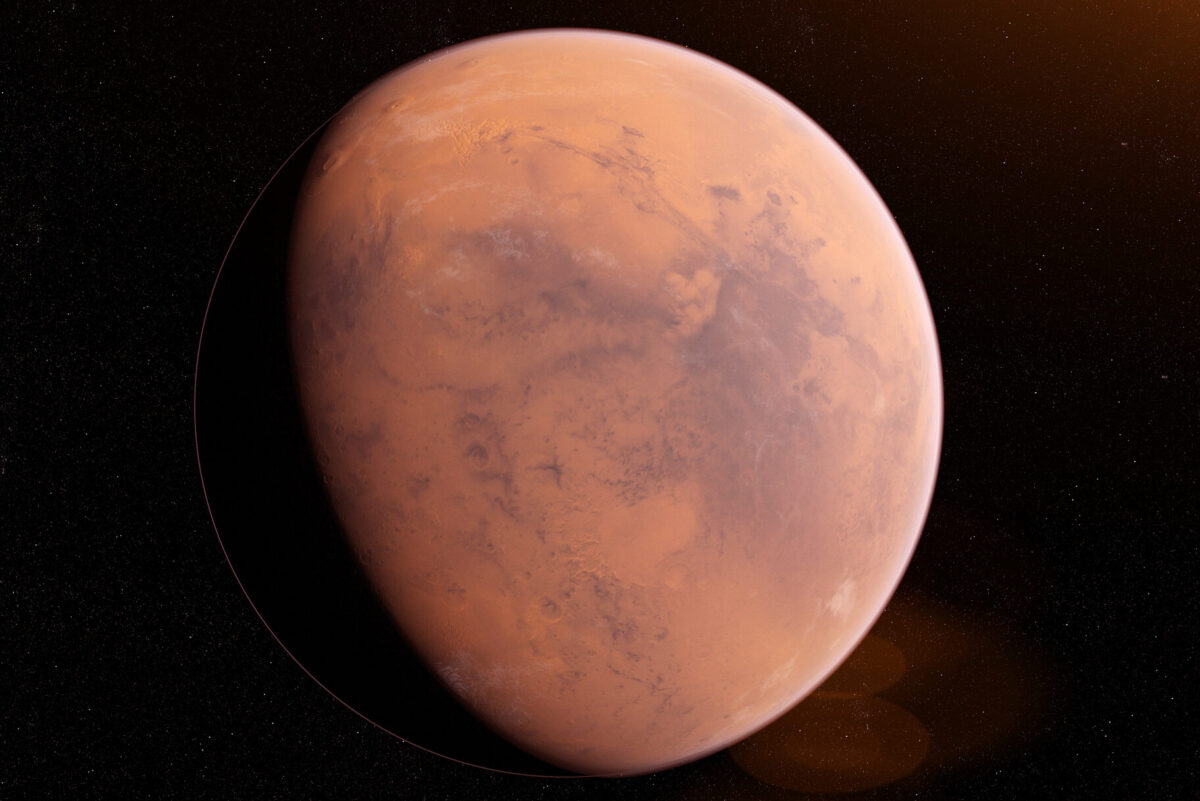

Cosmox Blogs
The Quest of life beyond Earth: Mars
The idea of aliens may sometimes feel too fictional to be true but it cannot be denied that the quest to find extraterrestrial life began a long time ago and has even made considerable advancements. One of the major potential places for life beyond Earth to exist is none other than our neighbor planet Mars. Without a doubt, Mars stands out as the most familiar planet to us. With each new exploration mission, our understanding of Mars deepens, intensifying the search for signs of life and fueling our curiosity about what might lie beneath its surface.
Scientists ponder over this question due to the fact that Earth was able to sustain life because it clearly had the atmosphere to do so. But according to recent studies Mars too had this environment in its early history. It had all the right elements, it had the atmosphere, oceans, and more. So was it able to sustain life?
The reason why the study is an important aspect of space exploration is because even if the presence of the simplest form of bacteria is confirmed on the planet then it would mean the phenomenon of life in the universe is as common as planets and stars.
Various evidences support the idea of life on Mars, some of which are as follows -
Presence of water on Mars
It cannot be doubted that the presence of water on Mars has been a vital discovery. It is not only a crucial hint for the presence of life on the planet but also helps us know more about the surviving capacity of humans there
Scientists believe that before Mars lost its magnetic field. The planet had its oceans, lakes, and seas. Without the protection that a magnetic field offered, the atmosphere was stripped, and eventually, the oceans evaporated as water vapor in the atmosphere was lost to space.
The indication of these are -
-> Mars is dotted with features closely resembling the deltas and river valleys of the Earth. These branching valleys suggest that liquid water once flowed over the Martian surface.
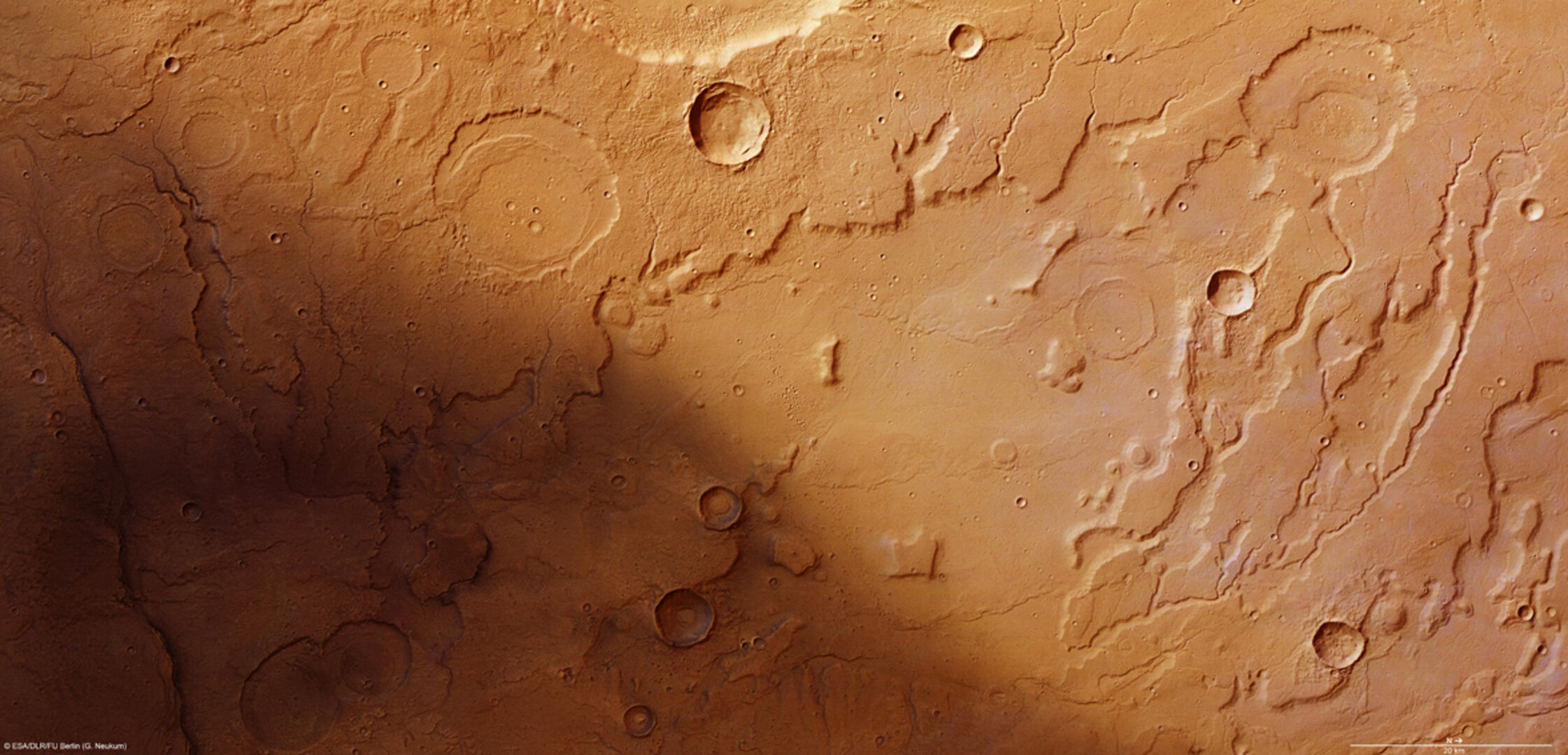
-> The presence of hydrated minerals (minerals that only form when water is present) on Mars has been another insight into this.
-> Martian rovers have discovered sedimentary formations on the surface of the planet similar to those formed by water processes on Earth.
However recently it has been found that water still exists on Mars in the form of permafrost Ice below the Martain surface. Large quantities of frozen water have been discovered in the Martian soil. Using the gamma ray spectrometer on NASA's 2001 Mars Odyssey spacecraft, researchers confirmed the existence of ice in an expanse of Martian soil the size of the United States, centered on the planet's south pole.
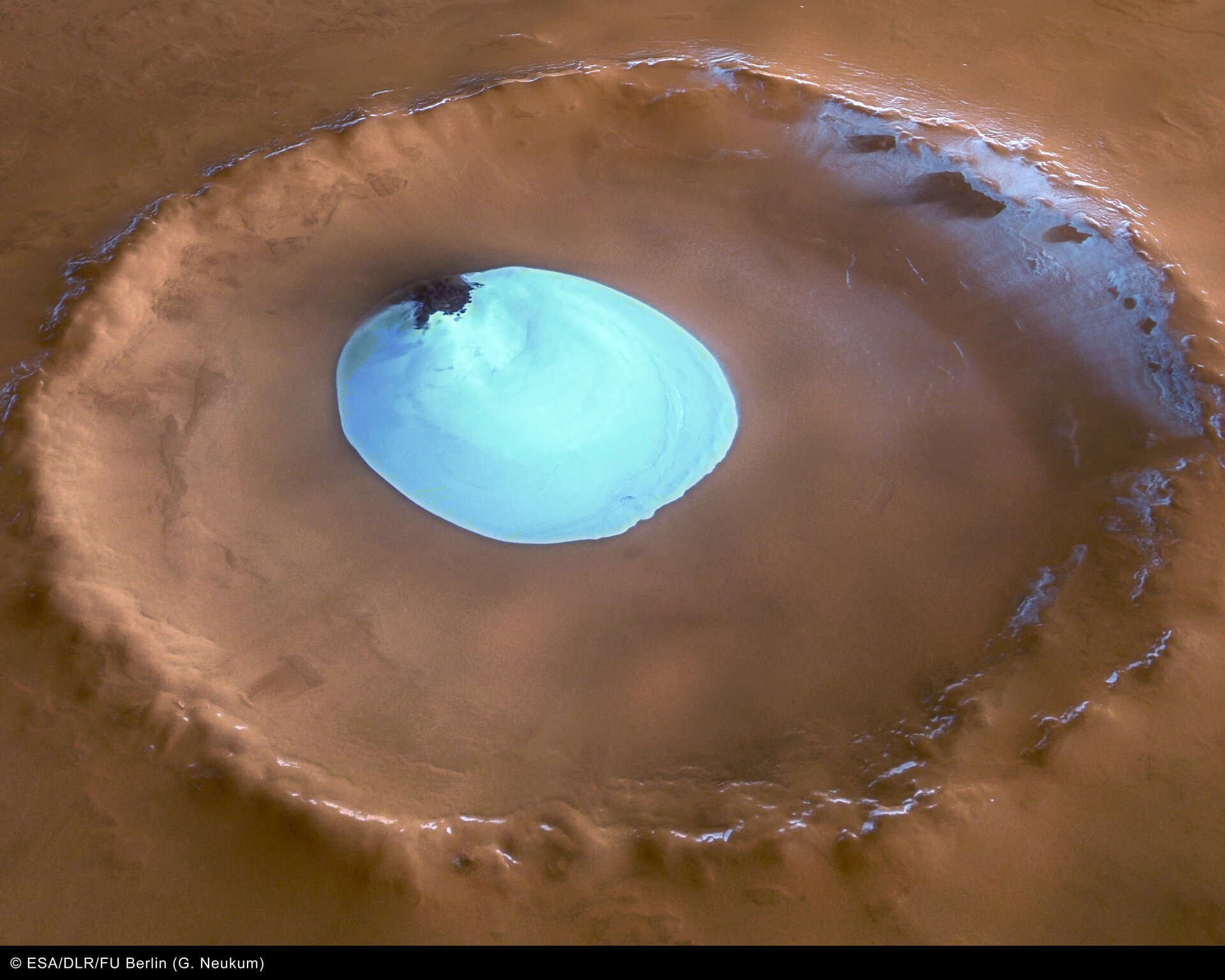
The Lost Atmosphere
While researching scientists consider two aspects of life on Mars -present and past. While doing so the former aspect can be quite demotivating due the presence of various posionous gases and mainly low atmospheric pressure. The current atmosphere on Mars is only 1% of that on Earth. Due to the lack of atmosphere, heat escapes easily from the planet making it too cold to survive.
However, recent studies suggest that Mars did have the right atmosphere in the past to support life. This was present for the first 400 hundred years of Mars history. Evidence on the planet's surface indicates that Mars was once warmer and wetter, suggesting a thicker atmosphere in the past.
Nasa’s MAVEN spacecraft gives us a clear idea of how Mars lost its atmosphere. This was a combined effect of various processes, one of them including Sputtering. The Sun constantly emits high-energy photons, when these photons enter the atmosphere of the planet they can crash into a molecule and turn it into an ion. When a magnetic field is near an ion, the ion spins around the field. The Sun had a giant magnetic field carried by the solar wind. The part of the field around the atmosphere of Mars can easily pick up the ions and launch them out into space. This causes atmospheric loss. Earth has its own magnetic field which has prevented the occurrence here.
Presence of methane on Mars
The biggest source of methane here on Earth is cows.
It has been discovered that methane is being released from various vents over the Martian surface. The big question here is what is the origin of this Methane? The exact answer to this question has not been confirmed yet, but the two principal answers to this question could be :
-> The first reason with the analogy of Earth could be that this Methane is produced due to microbial activity acting on certain chemicals below the Martian surface which proves the theory of life on Mars.
-> However, the other nonbiological reason is that it can be produced due to geochemical mechanisms in which carbon dioxide combines with water under very high temperatures and pressures to produce this gas which is then released separately.
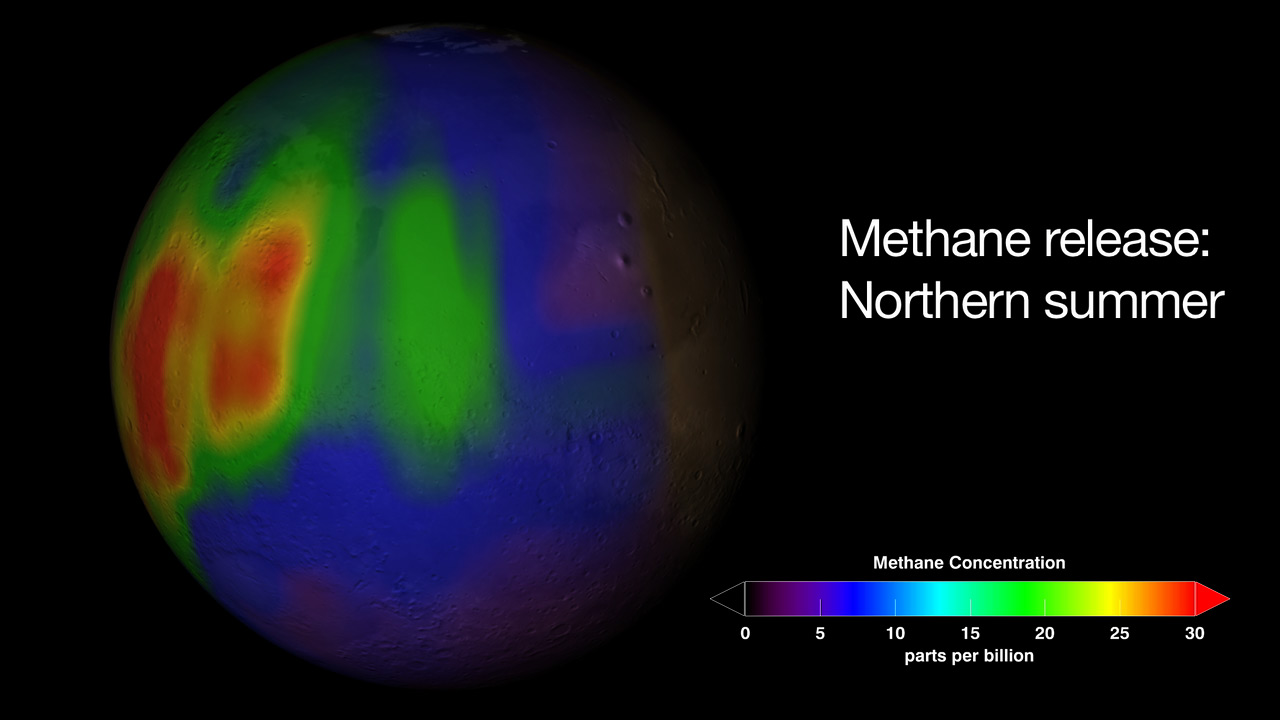
Presence of Sulphur on Mars
NASA's Curiosity Rover has stumbled upon an extraordinary find on Mars pure sulfur crystals. The discovery occurred when the 1-ton rover accidentally cracked open a rock, revealing yellowish-green sulfur crystals. that had never been seen before on the red planet. These salts, formed as water evaporates, had been detected before, but only as constituents of sulfur-based minerals mixtures of sulfur and other stuff. But this time, it was pure, elemental sulfur, a first of its kind.
It is a finding that indicates several reasons that are crucial for the presence of life-
-> On Earth, these formations often indicate biological activity, with microorganisms leaving behind sulfur compounds as they metabolize.
-> The presence of sulfur is another crucial point that proves the presence of water on Mars.
-> Sulfur compounds also reveal information about Mars’s potential hydrothermal systems, volcanic activities, or ancient lakes and seas — habitats that might have supported life.
-> They are involved in chemical reactions that produce energy, a survival mechanism for some Earth microbes in extreme environments like deep-sea hydrothermal vents.
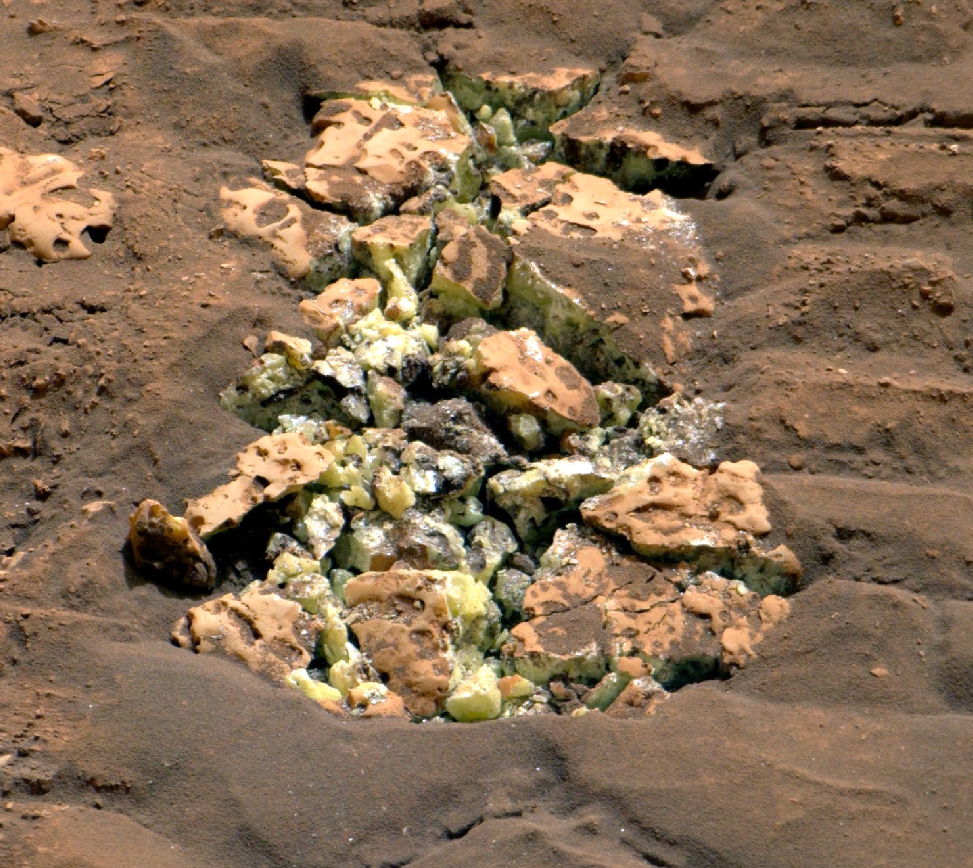
Allan Hills 84001
Allan Hills 84001 is a fragment of a Martian meteorite found in the Allan Hills in Antarctica on December 27, 1984, by a team of American meteorite hunters from the ANSMET project.
On August 6, 1996, a team of researchers led by NASA scientists including lead author Davis.S.McKay announced that the meteorite may contain trace evidence of life from Mars. This was published as an article in Science a few days later. Under a scanning electron microscope, structures were visible that some scientists interpreted as Fossils of bacteria-like lifeforms. However, this interpretation is controversial, and many scientists argue that the structures could have formed through non-biological processes.
Along with these, there are several other pieces of evidence like organic molecules and gale craters and more which suggest the presence of life on Mars. None of them have been confirmed yet but these point towards a possibility that the planet had or continues to have suitable conditions required to sustain life.
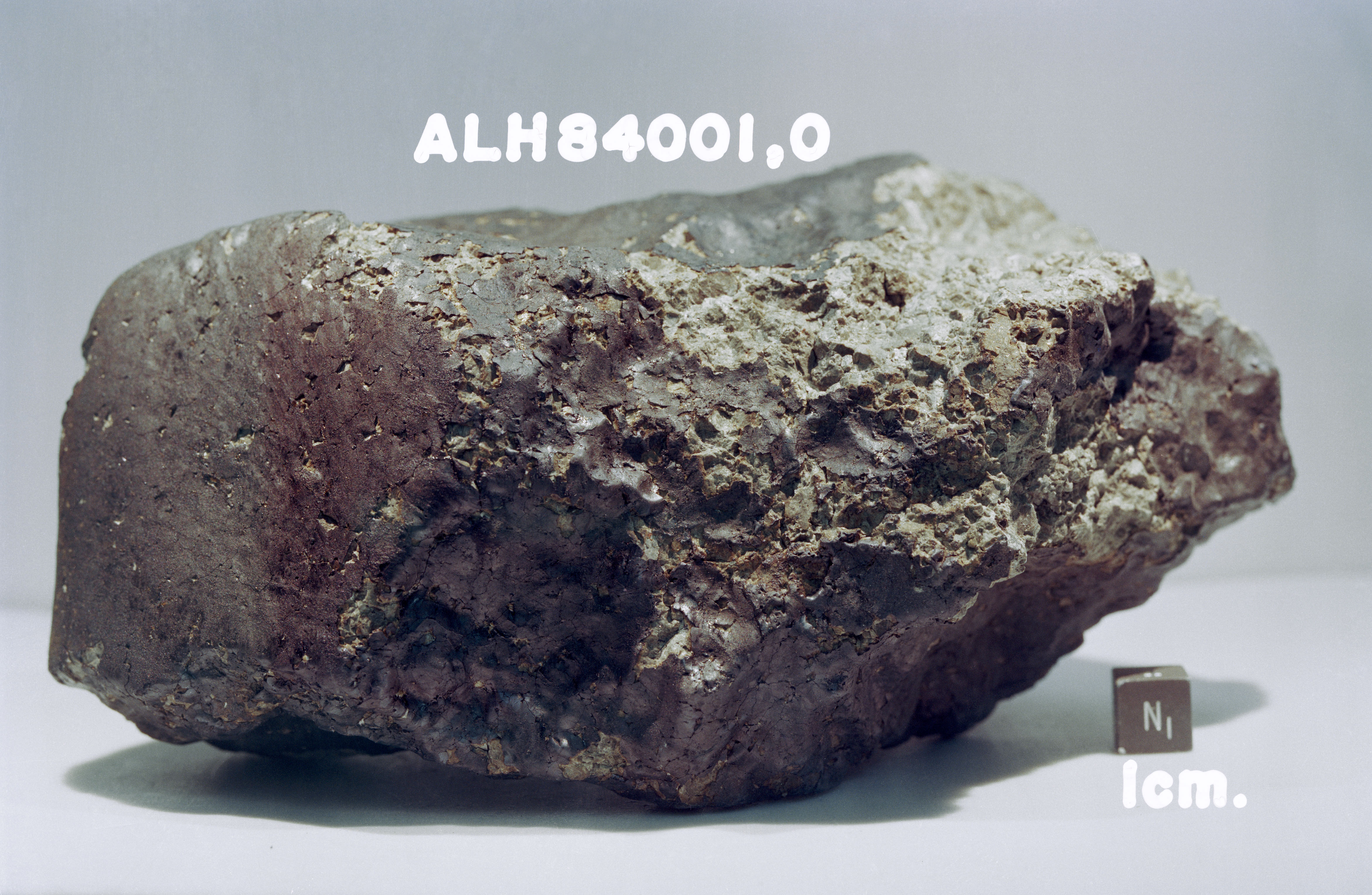
Important upcoming and ongoing exploration missions
-> Perseverance is a NASA Mars rover that landed on Feb. 18, 2021. The rover is searching for past life on Mars and collecting soil and rock samples for future return to Earth. Getting Perseverance's samples back to Earth will require at least two missions that are currently being planned by NASA and the European Space Agency.
-> NASA’s Curiosity rover landed on Mars in 2012 to search for evidence that the planet could once have supported Earth-like life. It found that its landing site, Gale Crater, once had a calm lake that could have supported life. Curiosity is now studying how Mars' environment transformed into an inhospitable desert. Its ongoing weather and radiation observations are helping prepare for human exploration of Mars.
-> The European Space Agency plans to launch its ExoMars rover, named Rosalind Franklin, in 2028. Rosalind Franklin will search for signs of past Martian life in an ancient watery environment using its sophisticated instruments.
-> Hope is a United Arab Emirates Mars orbiter that arrived in February 2021. Hope is studying Mars' climate to help us understand what Mars was like when its atmosphere could have supported life. Hope is the Arab world's first mission to another planet. More countries exploring our Solar System means more discoveries and opportunities for global collaboration.

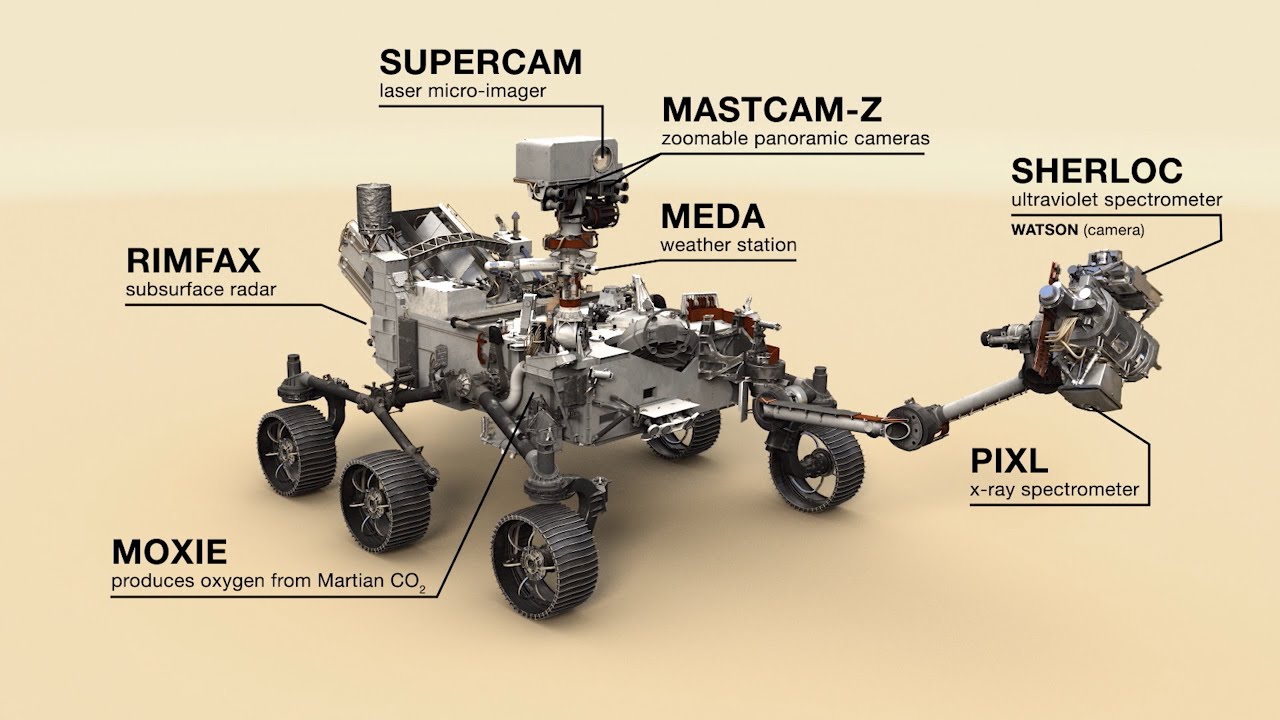
Conclusion
While this evidence has got our hopes up, factors like harsh environmental conditions, radiation levels, and more challenge this notion. There is no proof till now that confirms or completely rejects the idea of extraterrestrial life. Despite these obstacles, continued exploration and technological advancements offer hope for overcoming these challenges and may one day provide definitive answers about Mars' potential to harbor life.

Cosmox Blogs
A non profit organization that works on writing and delivering blogs on cosmology, natural sciences & environment, so that people can learn more about it. We even run a forums page, where our users interacts with each other and discuss about Cosmology, Natural Sciences & Astronomy. We even run an instagram and a youtube channel with podcasts.